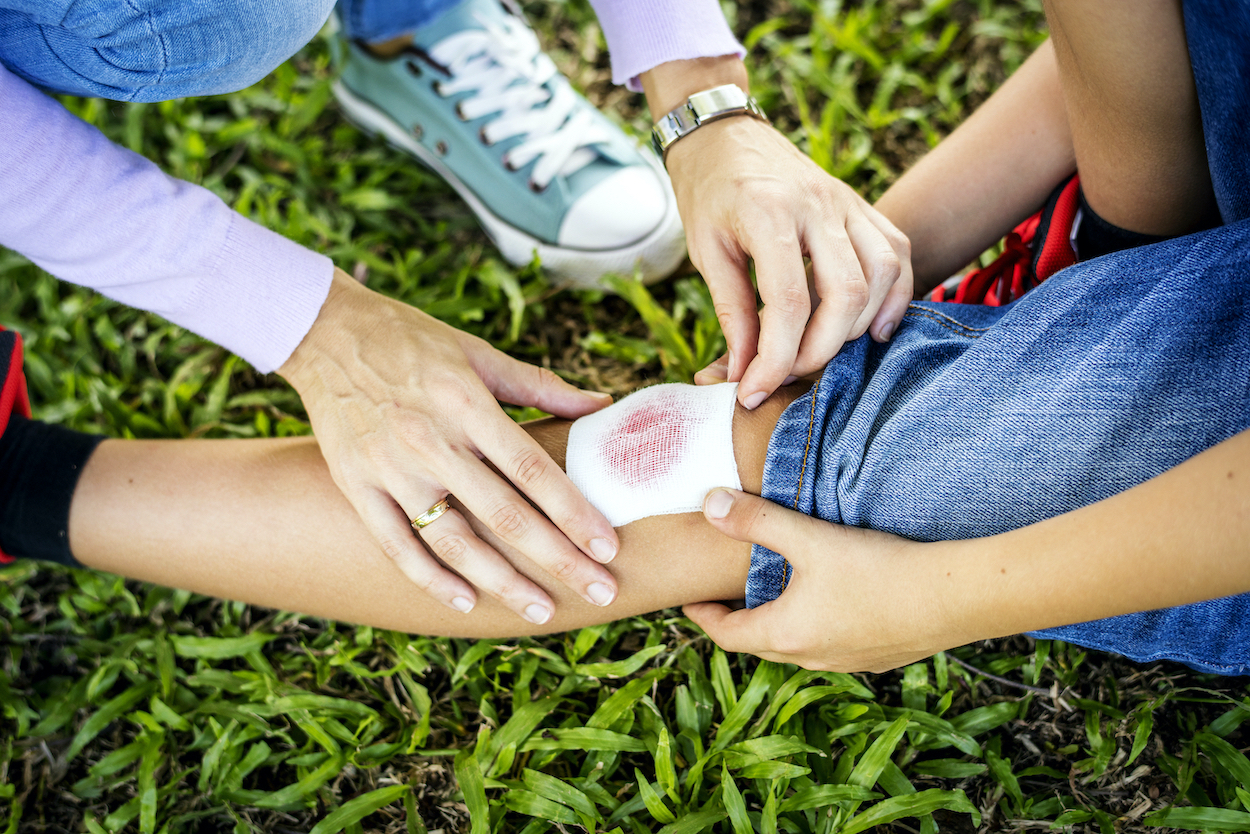
Whether you’re a new teacher preparing for your very first class or a seasoned vet getting ready for the new year, having a first aid kit in your classroom is essential. It’s no secret kids, especially young kids, are accident-prone, and it’s likely you’ll have to deal with more than one bloody nose or skinned knee throughout the course of the year.
It goes without saying that more serious injuries should be left to the school nurse or someone certified in first aid, but you should still be prepared to handle minor scrapes and bruises without disrupting the flow of the day.
First Aid Kit Essentials
Medical Gloves
Any time blood is involved, gloves are a must for those providing care. Make sure they’re made of nitrile or another non-latex material to avoid triggering allergies.
Bandages
For those cuts in awkward places, get plenty in different sizes and shapes, including roller, triangle, and butterfly bandages.
Antiseptic Wipes
Use antiseptic wipes to take care of germs before applying a bandage.
Antibiotic Ointment
When you apply a bandage to an open wound, it’s always a good idea to add a little antibiotic ointment. It prevents infection from invading the wound, and some scrapes may even heal faster when it’s applied.
Tweezers
Does your playground have woodchips? Tweezers are ideal for pesky splinters and slivers.
Ice Packs
Ice is one of the best ways to treat minor bruises. Ice packs will need to be kept in a freezer, but if there isn’t one available in your classroom, try disposable instant cold packs instead.
Disposable Masks
It’s an unfortunate truth, but the pandemic isn’t over. Keep extra masks on hand, just in case.
Forehead Thermometer
Much more sanitary than traditional under-the-tongue thermometers.
Medical Tape and Scissors
For securing and trimming roller bandages and the like.
As teachers, your children are your responsibility. For hours every day, their parents trust you with their safety, and it’s your job to be prepared for an emergency during the school day. For teachers, paras, and classroom assistants, the next natural step in keeping classrooms safe is CPR and first aid certification, and many find there is no better way to protect the children who rely on them.
Getting CPR and first aid certified may be easier than you think. At Specialized Health and Safety, we offer training for individuals, as well as larger organizations, ensuring your school is as safe as it can be.

